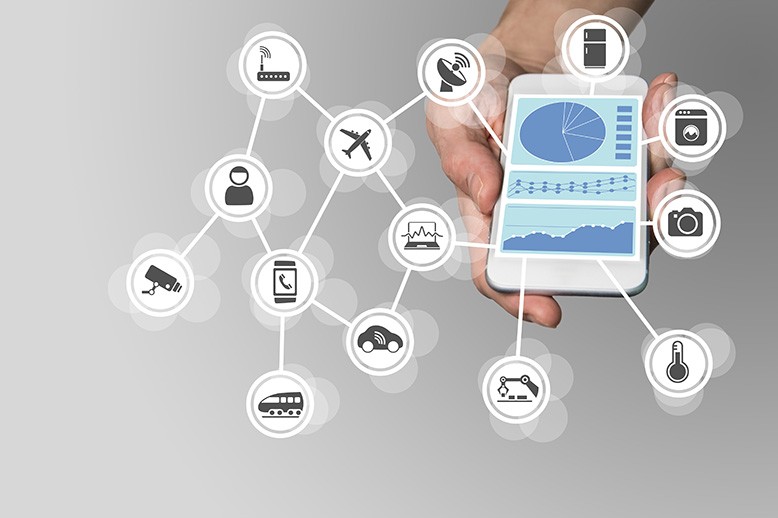
The Internet of Things (IoT) is much more than a consumer trend, it’s rapidly changing the way enterprises are using data to improve business decision-making. In fact, a report from BI Intelligence, predicts that the enterprise sector will account for 39% of the roughly 29 billion active IoT devices by 2019.
As the IoT is bringing billions of new connected devices into our lives, it offers an unprecedented amount of data about products and services and how we use them—uncovering new business opportunities.
What IoT Means to Business Analytics
Much like the other big buzzword of recent years, “Big Data,” the possibilities of IoT are endless. But there’s a caveat. As with big data, organizations must unlock insights from the data gathered (which, let’s face it, is nothing but binary code) and then act on those insights to derive value. To do this, the data streaming from those devices must be managed and analyzed.
Consider this scenario: A metropolitan transit agency needed an economical way to keep a pulse on its entire bus fleet, beyond simple GPS tracking, so that riders could be kept informed about bus scheduling, delays, and so on. IoT has made this possible, and more. The agency got a single source of truth about vehicle movements that help better manage fleets, re-route buses and prevent bunching.
Here’s how:
Using a combination of smartphone-based GPS and cloud-based technology, every three seconds the transit agency receives data about the movement of each vehicle in its fleet. This data is then processed and visualized via a real-time dashboard. But the agency also needed this data to work strategically for them. What they sought was a powerful business intelligence (BI) capability, one that would give fleet operators a better perspective on system performance (think anomaly detection, hidden deficiencies, trends, inter-agency comparisons, etc.).
As you can see, IoT is about far more than an isolated device that pings the mothership 24x7. With the application of analytics, it becomes a powerful business tool. But powerful tools need horsepower, and this is where the cloud has come into its own.
IoT Works Better with the Cloud
To connect devices and analyze massive amounts of data on the fly, you need an affordable and scalable platform for that big data. Legacy data centers and databases simply can’t handle that kind of load without impacting performance or making it prohibitively expensive. Furthermore, traditional “on-premise” environments are tightly coupled with the personnel that operates and administers them. This person (or department) acts both as a filter and a single point of failure resulting in distorted analytics.
So, we’ve got to thank the cloud for making IoT and BI possible. In a cloud-centric IoT environment, not only are economies of scale and processing heights reached but these tight systems are decoupled, freeing up personnel to be more focused on hardware.
IoT + the Cloud = Better Data Quality
Scalability and processing power aside, the cloud also brings another often overlooked benefit to IoT—data transparency. By exposing gathered data via a cloud-based Application Program Interface (API), organizations can share and extend the value of that data with employees, partners, customers or even external developers. By building applications on top of the API, these communities bring different perspectives to business problems and shed light on bad or inconsistent data issues, leading to improvements in data quality and correct reporting. It’s a perpetual cycle of improvement, where businesses improve data quality in parallel with providing better services. Modern cloud platforms have facilities ready today to establish a developer-friendly data sharing layer, thus naturally becoming a breeding ground for collaboration, innovation, discovering new revenue or service opportunities, and more importantly, add more consumers to your data, so it is useful to more partners who will help you to make sure it is of good quality.

Are You Ready?
According to a report by Verizon, 72% of organizations feel that IoT is to their competitive advantage. But are you ready? To help you get started, we’ve assembled a four-step strategy to a successful deployment:
Step One. Collect good data—Data quality is of the upmost importance to any IoT strategy. This starts with your data collection process. The system should produce minimal noise as this will impact everything downstream, including quality of reports. In many cases, existing technologies like smartphones and a simple app will do the job. Smartphones have been proven reliable and can transmit data to the cloud seamlessly, bypassing the need for a costly on premise infrastructure.
Step Two. Process data and create reports—At this stage BI is used to spotlight anomalies, identify problems, compare results with other organizations, and all that magic. Data transparency should be inherent in platforms to be exploited by organizations to uncover insights, act on them and compare success with other communities and business units. This can be a highly customized process, manipulating real-time data, sending alerts, processing aggregations and showing webpages with custom reports. Alternatively, processing can be performed by standalone BI tools allowing for ad-hoc reporting, such as Microsoft Power BI or similar.
Step Three. Share—Once you’ve begun collecting data, the next step is to put it to use and develop applications that will take advantage of new data. One option is to hire programmers to build the applications you need. This can quickly get costly, both at the developmental and maintenance stage. However, by exposing data via an API you’re letting someone else build great applications, often free of charge for organization. This open approach removes barriers between business units while inviting attention from partners, customers, software developers, etc.
Step Four. Receive feedback—With openness comes reaction. Listen to those who rely on your data services. Invite input and use the information to make continuous improvements. As soon as your data becomes important for someone, they will start noticing gaps or problems and start offering feedback about additional value that you can derive from your datasets. This kind of outcome is quite difficult to achieve in a traditional “siloed” enterprise, which would sometimes make data stale, underused and deteriorated.
Welcome to the Future
It’s not hyperbole to say that connected devices will change the shape of business today. The IoT brings benefits to enterprises including more effective monitoring of machinery, equipment and vehicles, better security, efficiency, energy management, and even enhanced location-driven marketing—often opening up new business opportunities that have yet to be discovered.
The imperative and the capabilities exist today. Don’t get left behind.
To learn how EastBanc Technologies’ IoT experts can help your organization thrive, contact:
Jill DaSilva | Director of Sales Operations | jdasilva@eastbanctech.com | 202-295-3010